Growing lettuce is a lot like getting along with people. You want to be careful not to expect too much, without expecting too little, either.
Some gardeners want this cool-season vegetable to keep producing in hot weather, for example, and that’s just not possible.
But you may not be aware you can rely on most varieties of Lactuca sativa to keep growing as freezing temperatures set in, with some support from you, the gardener.
You will need to protect most types from frost. But when you do, you can expect this species to produce baby leaves and even full-size heads well into late autumn or winter, times of year when fresh greens are so welcome.
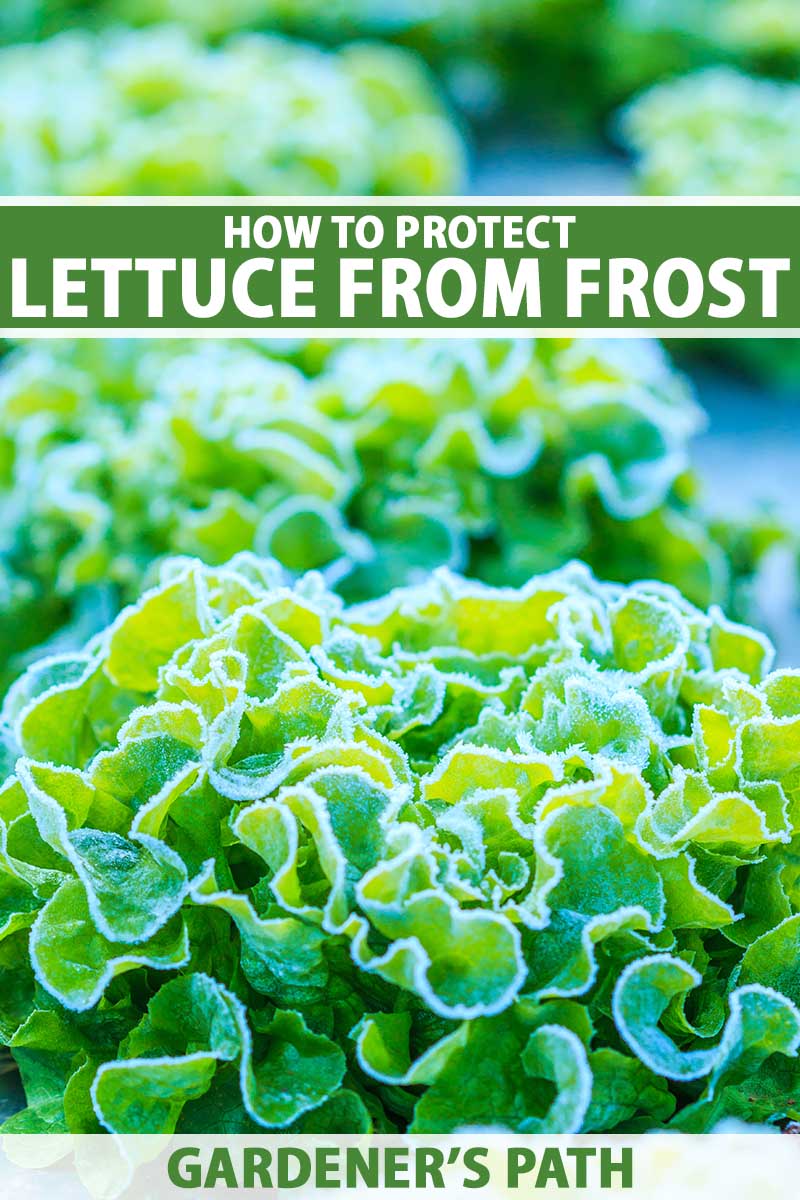
We link to vendors to help you find relevant products. If you buy from one of our links, we may earn a commission.
I’d like to encourage you to ask more from your lettuce in the cool months, but only after giving it what it needs to resist frost or survive light freezes.
You’ll be happy to hear it’s much easier to get your crop to meet the expectation that it will survive through a frost than it might be to get a human to start picking up their socks or waking up on time!
I’ll give you some pointers that will make the experience easy.
Here’s what I’ll cover:
What You’ll Learn
Is Lettuce Cold Tolerant?
Lettuce is no Russian kale, which can grow merrily along when temps plummet to -10°F. It’s also less cold-hardy than most other cole crop leafy greens, including spinach, some mustards, and baby leaf brassicas.
But it is a quintessential cool-season crop, and some varieties grow quite well even if the temperature dips below freezing.
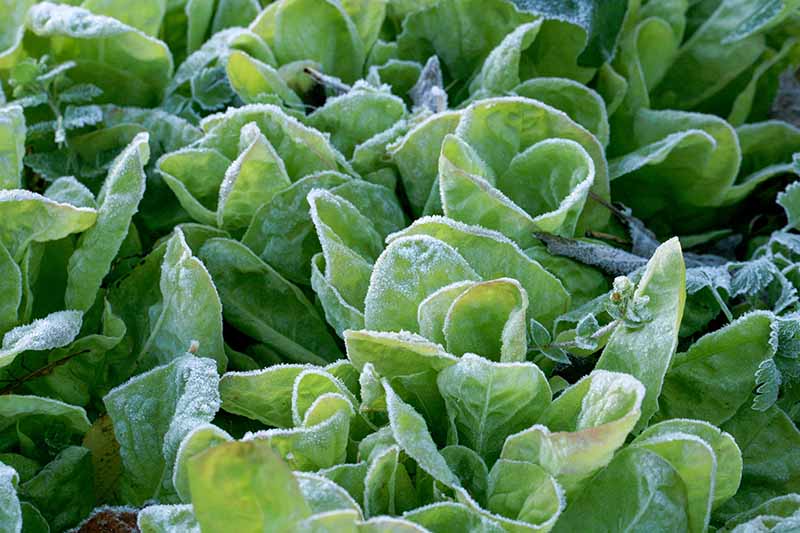
Jim Myers, plant breeder and researcher at Oregon State University, describes lettuce as “semi-hardy” vegetables, ones that will do okay in light frost, when air temperatures range from 28 to 32°F.
Most types grow best in temperatures from 55 to 65°F, but if you “harden” the plants by introducing them gradually to progressively colder temperatures, many leaf varieties and some butterhead and crisphead types will withstand the cold down to 20°F.
There are also numerous cultivars that have been bred or selected to survive really low temperatures, like -30°F, and I’ll share a couple of those varieties here in a minute.
But first let’s consider the average lettuce. Most types can usually sail through the occasional light frost, which occurs when temperatures are at or just a little below 32°F with a low dew point, and ice crystals begin to form.
But they require special measures on the part of the gardener to withstand hard frosts, when the air is colder than 28°F, or during hard freezes, when temps below 25°F last for four or more consecutive hours.
If you’re growing your average garden variety lettuce, stay tuned for frost protection tips.
If you haven’t decided what to grow yet but are serious about growing salad greens well into the frosty months, you may want to look into some of the veggies that can be harvested as baby leaves for salad, even in chilly weather.
A few options include mizuna, arugula, and spinach. Find more suggestions in our guide.
Best Types to Grow in Chilly Weather
If you usually think of garden lettuce in generic terms, you need to recognize that all varieties are not created equal for growing in frosty conditions.
The leaf varieties that you cut continually through the season tend to be more cold hardy than butterhead or crisphead types, for example.
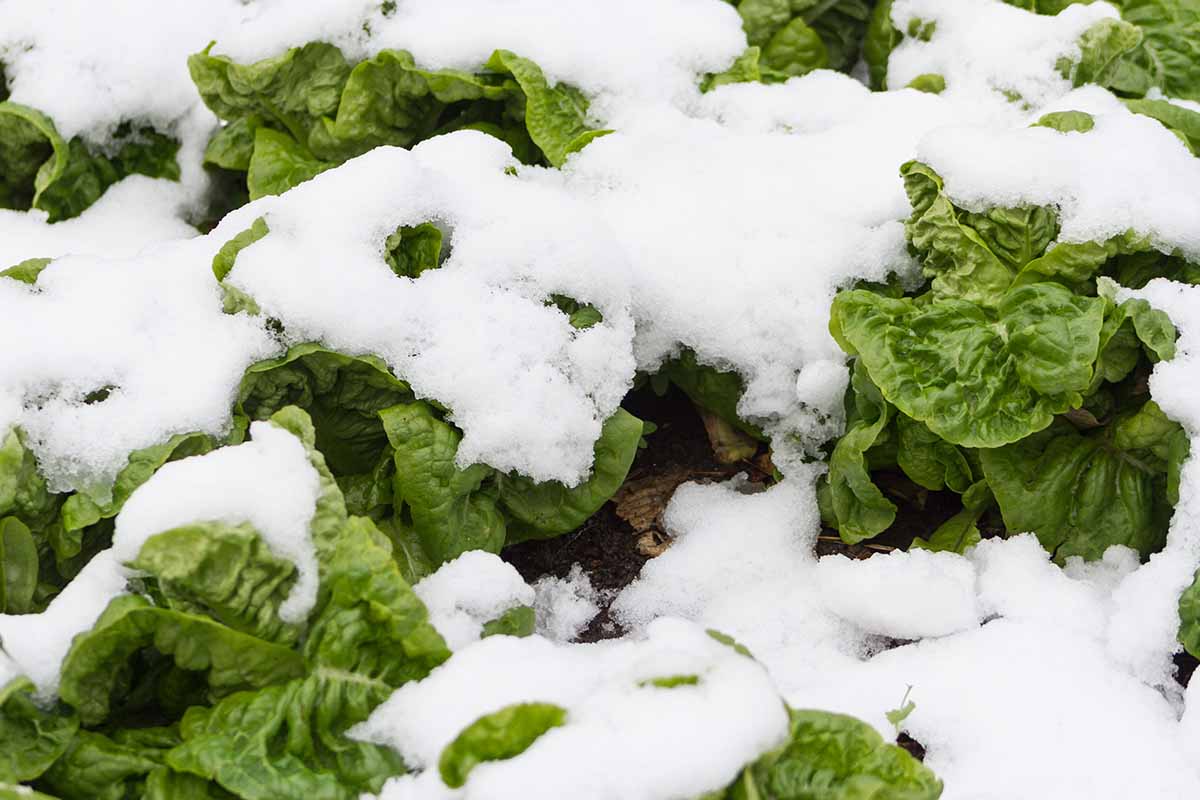
They’re also more tolerant of the shade that’s more prevalent through the shorter days of autumn and winter.
For a healthy harvest after the arrival of first frost, it’s also important to pick the ones that will mature well ahead of continuous hard freezes in mid-winter.
While you can protect your crop from frost up to a point, even the best mulched or covered greens will eventually succumb to sustained periods of freezing weather.
Be sure to check the seed packet for its “days to maturity” info ahead of sowing. This can range from 40 to 70 days, or sometimes more, so choose wisely.
Keep in mind that baby greens will be ready to pick more quickly, and conversely, that vegetables also tend to grow more slowly in cooler temperatures.
Depending on how cold your winters are and when you anticipate the arrival of prolonged periods of hard freezes, you’ll want to sow a variety that will mature in either early fall, late fall, or early winter.
If you’re determined to grow lettuce in the chilly months and live in a colder growing area, you may want to opt for one of the cold-adapted varieties that have been bred to grow in northern climates.
They are sometimes a good choice for those who want to overwinter lettuce in a hoop house or beneath row cover in areas with more moderate winter temps, too.
Here are three cold-adapted cultivars to consider:
Grand Rapids
This one’s perfect for the winter salad bowl. A popular loose leaf variety, ‘Grand Rapids’ produces a rosette of bright green, frilly leaves with a mild, lightly sweet flavor.
It’s renowned for its cold hardiness, producing vigorously at temperatures well below freezing.
This is a good option to grow all winter long in an unheated hoop house or cold frame.
It can also thrive in low-light conditions, which makes it a suitable selection for growing in the short days of autumn and winter, or beneath a row cover that doesn’t let in as much light as unprotected plants would receive.
This cold weather choice also grows quite quickly, producing baby leaves that are ready for harvest 30 days after germination, and full-size leaves about three weeks after that. That can be a big advantage if Jack Frost arrives early in your area.
‘Grand Rapids’ seeds are available in various package sizes ranging from one gram packets to 25-pound sacks, from True Leaf Market.
Great Lakes 118
This is one of the crisphead, or iceberg, lettuces bred specifically for northern growers. It is frost resistant and produces dense heads that reach six inches in diameter in 68 to 82 days.
If you like, you can harvest the dark green outer leaves a few at a time before picking the whole crisp head at maturity.
Those who grow veggies in mild climates can sow ‘Great Lakes 118’ in fall and winter for a year-round harvest. It will germinate in soil temperatures as cool as 40°F, though the ideal outdoor sowing temperature is 60 to 70°F.
‘Great Lakes 118’ seeds are available in one-gram packets from Botanical Interests.
Lollo Rosso
This cultivar offers a rosy color along with cold resistance. Bred to be grown in cooler regions in Zones 4 to 9, ‘Lollo Rosso’ produces ruffled, magenta leaves with green bases.
They reach full size 50 to 70 days from sowing, but the outer leaves can be harvested once they reach an inch tall at about 21 days.
Seeds are available in packets and in bulk from True Leaf Market.
Of course, you can also increase your odds of an early winter lettuce harvest by planting a couple of portable containers with a loose leaf blend in late summer.
That type thrives in “salad bowl” plantings, and if you’re still cutting greens when the cold weather arrives, you can simply bring the pot into a sunny kitchen to finish the growth cycle and harvest.
A five-variety loose leaf blend is available in 15,000-seed packets from Burpee.
Check out our guide to 29 of the best lettuce varieties to learn more.
How Cold Affects Lettuce Plants
What does it mean when we say lettuce is “frost hardy?”
The label takes into account varying types of freezing weather. Frost occurs when the air has enough moisture and the temperature cools to a temperature where dew forms on leaves and stems.
If the temperature also dips below 32°F at ground level, frost forms.
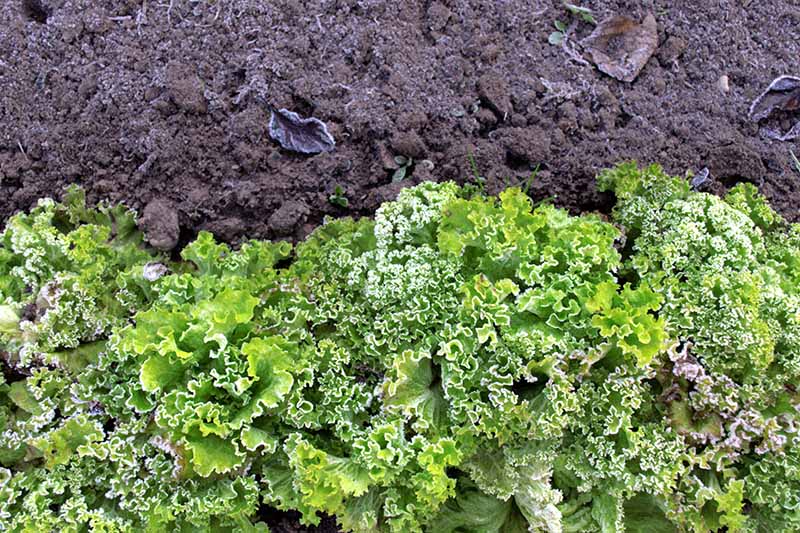
With light frost, which occurs at temperatures that are just barely freezing, the water inside the cell walls might freeze, but probably not.
A hard frost, when the ground-level temps sink to 28°F or lower, can make plant tissue start forming ice.
Lettuce can usually tolerate at least a couple of hard frosts, especially if you’ve taken steps to harden off the seedlings and keep the soil warm.
A light freeze is defined as any time temperatures are in the 28 to 32°F range, and a hard freeze occurs below 28°F. If the air is moist enough, freezing in this range might also involve frost, but it’s not a given.
Lettuce may cope with light freezing and even one or two hard freezes, but once the thermometer reads 25°F or below, the plants are in danger.
That level of cold causes ice to form in the plant tissue, regardless of the amount of moisture in the air. As the water expands, it causes cell walls to burst.
More than four hours of those harsh conditions will kill most types of lettuce, pronto.
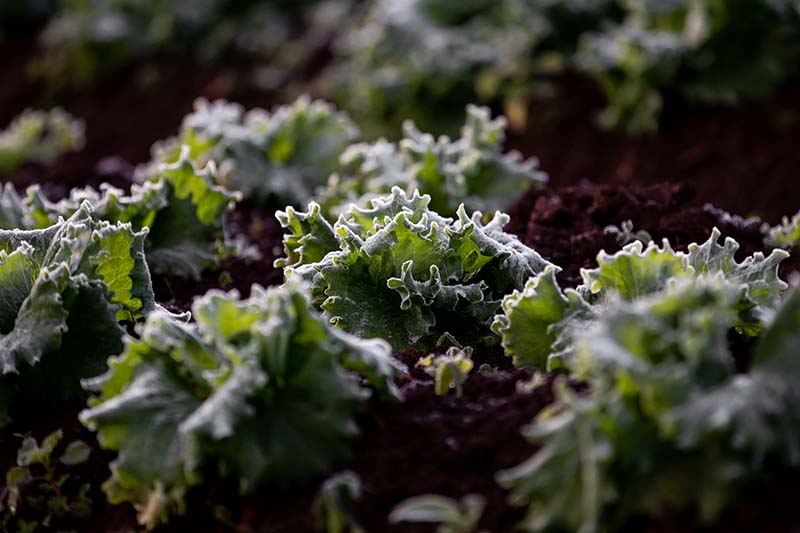
You’ll know that lettuce has succumbed when you see blisters and tan, dead splotches on the outer leaves. There’s no coming back from that kind of freeze damage.
But you may be able to prevent this, at least until temperatures are consistently below 20°F.
Read on for some frost-proofing strategies that will work to extend the season for your crop at least a couple of times.
I do want to mention that these tactics are only worth using when you have plenty of lettuce growing, and anticipate a return to more ideal growing conditions within a day or so.
Once your area starts experiencing ongoing hard freezes, or if you’ve only got a few stray leaves left, it’s not a good use of your time or resources to keep trying to grow lettuce in frozen ground, however many covers you might have to use for the purpose.
If you’re interested in overwintering lettuce in cold areas, you’ll probably need a greenhouse or at least a hoop house and additional row covers.
Frost and Freeze Precautions
If Jack Frost hasn’t already made an appearance in your vegetable garden and you have the luxury of preplanning, several strategies will help to prevent frost or freeze damage when cold weather does arrive.
You’ll want to provide well-draining soil, for example, so water won’t pool and then freeze the plants’ roots.
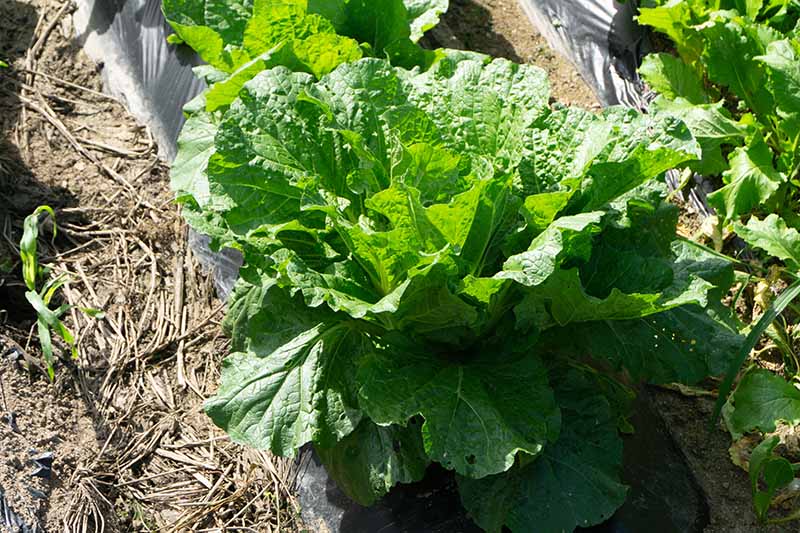
It’s also a good idea to make yourself familiar with your area’s average first and last frost dates, and note them in your gardening journal or with a cell phone reminder.
That way, you can plan when to sow varieties that have different timetables for maturing, so you won’t unintentionally plant lettuce that won’t be ready to pick and eat before the weather turns ornery.
When you’re planning out your timeline for harvest, bear in mind that the growth rate will slow as the soil cools, so add a week or two to the predicted number of days to maturity when you’re growing in temps below 55°F.
Ideally, you’ll be able to time your late summer or early fall sowing so that you’ll be harvesting baby leaf lettuce in the first days of light or hard frost.
The younger leaves of a loose leaf salad mix are less likely to sustain ice or frost damage than mature lettuce heads.
Give your seedlings a chance to get used to the cooler temperatures, too. You can’t expect them to survive even a light freeze if you’ve just transplanted them, or if they’ve only just sprouted.
The ideal method is to sow a month ahead of the average first frost, or transplant at least a couple of weeks before that date. That timing allows the seedlings to get used to progressively cooler temperatures.
Lettuce that has been hardened off may be able to survive several bouts of temperatures as low as 20°F, especially if you also employ row covers and mulch.
Winter mulch is key to helping lettuce survive frost and frigid weather. And placing it well ahead of the ground freezing or the arrival of cooling temperatures is just as important.
Your goal is to keep the soil warm, and keep it from freezing for as long as possible.
Cover the lettuce patch with a two- to three-inch layer of organic material. Place it over the bare soil and up to about an inch from the main stems or loose leaves.
Wood chips, straw, or pine needles are all good choices. Just make sure the mulch hasn’t been sprayed with herbicides and doesn’t include black walnut chips, since the juglone they contain can kill the lettuce or leach into the ground and hurt next year’s crops.
Learn more winter mulching techniques in our guide.
Once the plants are in the ground and the cold weather sets in, be careful about watering. Give lettuce supplemental water only if the soil is dry down to at least an inch.
Make sure to water at the soil line, not from above. Any water that splashes on the leaves can freeze and destroy the plant tissue.
Water in midafternoon, to give the soil a chance to absorb the water before dusk, when the air and soil both start to cool and may potentially freeze.
Protective Measures
Once a hard frost or temperatures below 25°F are predicted, forewarning and protective covers are your best bets.
First rule: Follow a reliable meteorologist or weather center as near to your location as possible, so you can anticipate frost and freezing temps and take precautions.
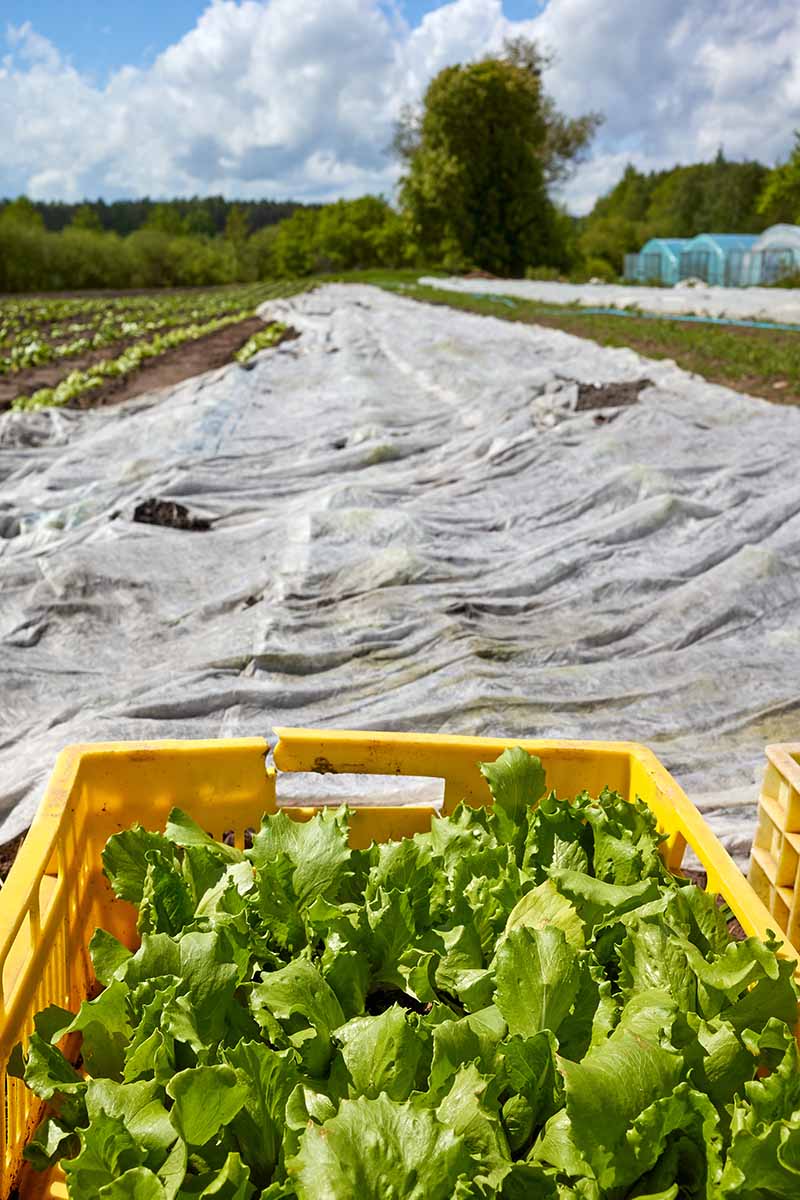
Garden blankets or floating row covers are both reasonably priced, and you can support these with wire or metal hoops, or bent PVC hoops.
To learn more about row cover options, consult our guide.
You can also make do with common household items for the covers if an impending frost caught you unaware in the fall.
You could tent sections of newspapers, light bedsheets, clean drop cloths, or towels over a row of bamboo stakes or tomato cages, for example.
Or lay those materials right over the rosettes, leaves, or heads, without letting the covers touch the greens. If they come into contact, the leaves will probably be damaged, but they may still survive the cold temps.
Make sure the cover material reaches down to the ground to retain heat. Keep it anchored with bricks, rocks, or items with a similar weight. I’ve used gallon milk jugs filled with water to keep the covers from blowing away.
Other protectors to use in a pinch include sanitized buckets, clay flower pots, or small cardboard boxes upended to cover the plants.
Conduct the coverup after the midday sun has waned but before dusk, to capture the radiant heat stored in the garden soil beneath the cover.
Apply covers too early, and you risk trapping so much heat that your plants wilt. But if you wait until after dark, that heat has already escaped back into the atmosphere.
There’s a follow-up step, too. Once the frost thaws the next day, quickly remove the covers so the heat buildup doesn’t scald or wilt the lettuce.
Lettuce Eat Salad in the Cool Months
Having lettuce available to pick fresh from the garden after icy weather arrives gives my vegetable-loving soul something to look forward to in early winter.
When I’m tossing a green salad to enjoy with comfort food lasagna, or arranging our traditional spicy chilled shrimp on a bed of baby leaves for Christmas Eve brunch, I’m always glad I took the extra steps to keep my lettuce thriving in frosty weather.
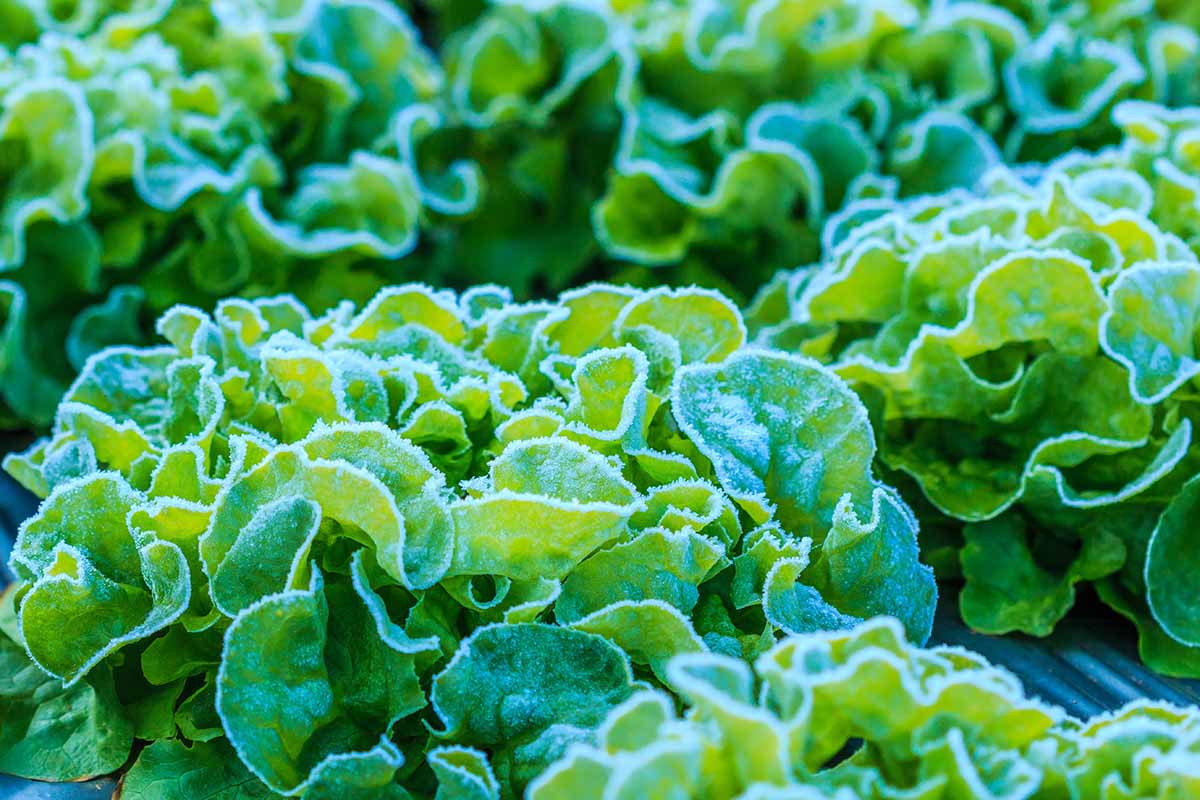
What about you? Do you grow these tasty greens in low temperatures? Please add any tips or questions that you have to the comment section below.
And if you found this information helpful but want more tips on growing lettuce in other seasons, read these guides next:
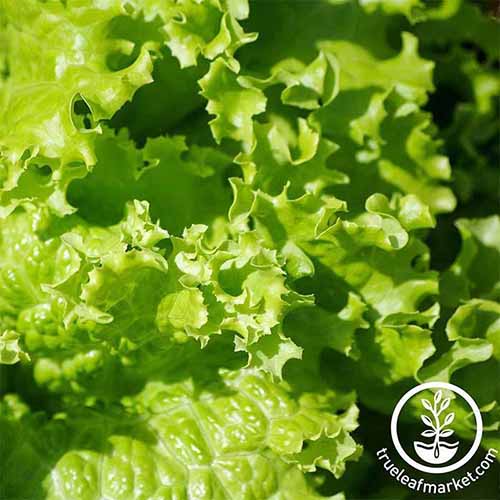
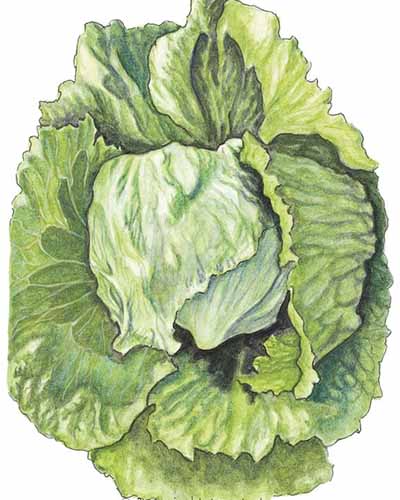
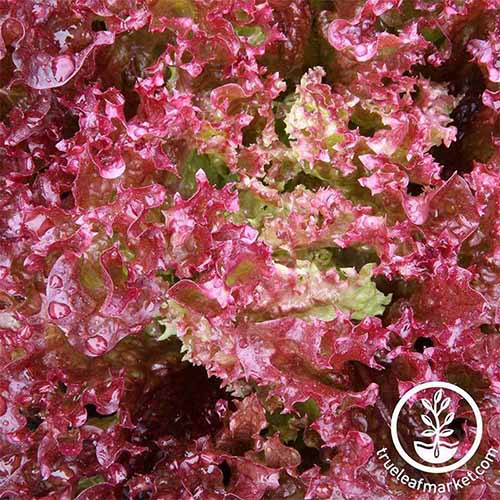
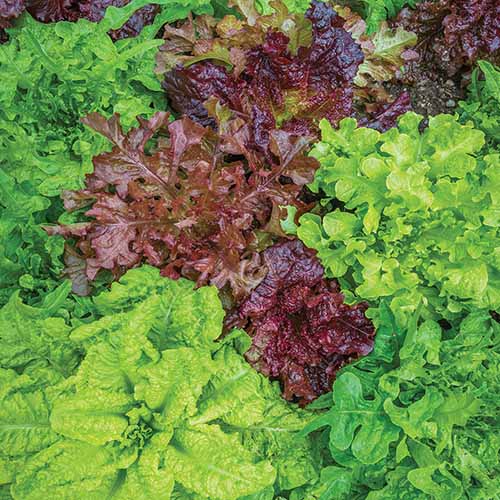
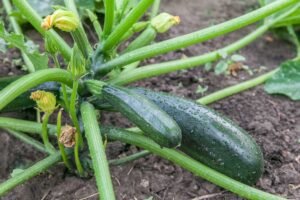
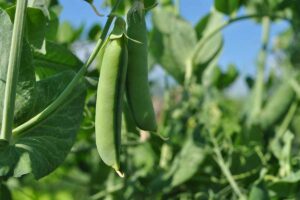
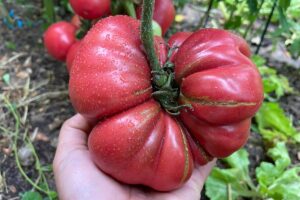
Thanks for the article! I grow my lettuce in plastic bins that others discard. I bring them in when a freeze is predicted, and cover them to the ground with sheets in frost, to retain ground heat. Lettuce will not grow in Houston in late spring until late fall. Else it will bolt, and go bitter. Had some nice perennialization from past boltings though. I let them seed into beds along the fence, and replant in late fall.
Your approach sounds wonderful, Steve!
Many years ago a random design book I came across at the publishing company where I worked featured a British home with lovely full-grown lettuce hedges! They were beautiful.
Thanks for sharing.